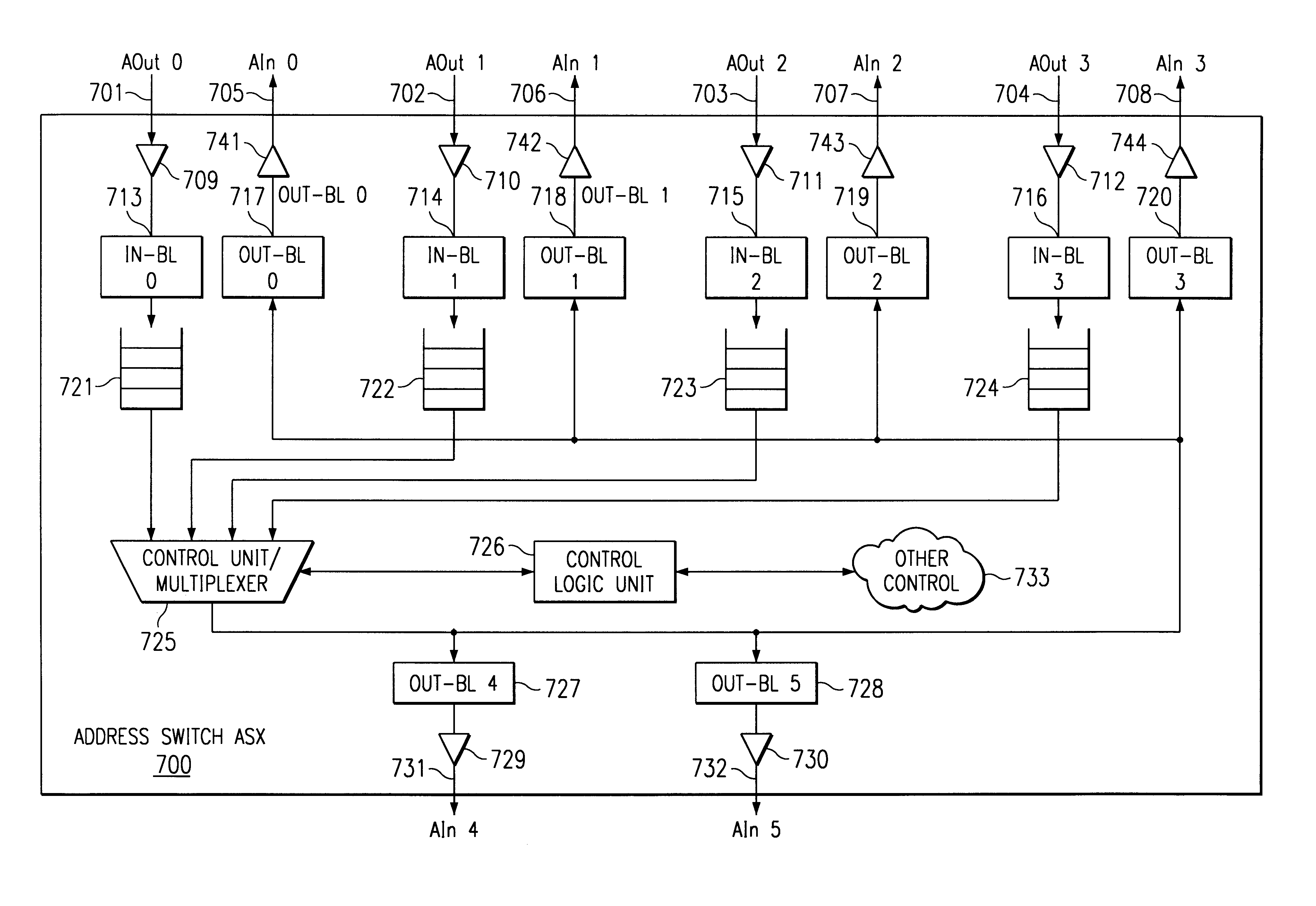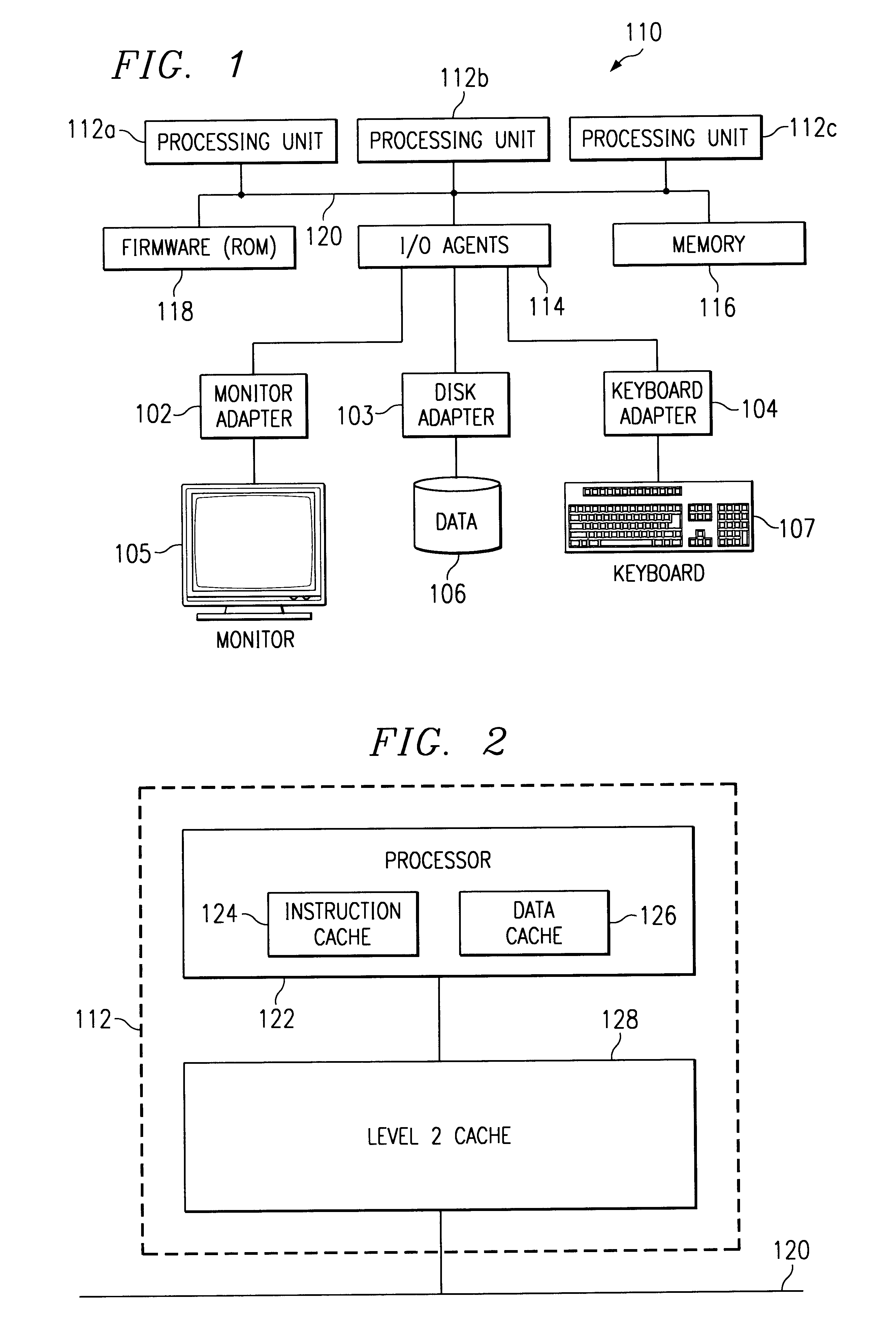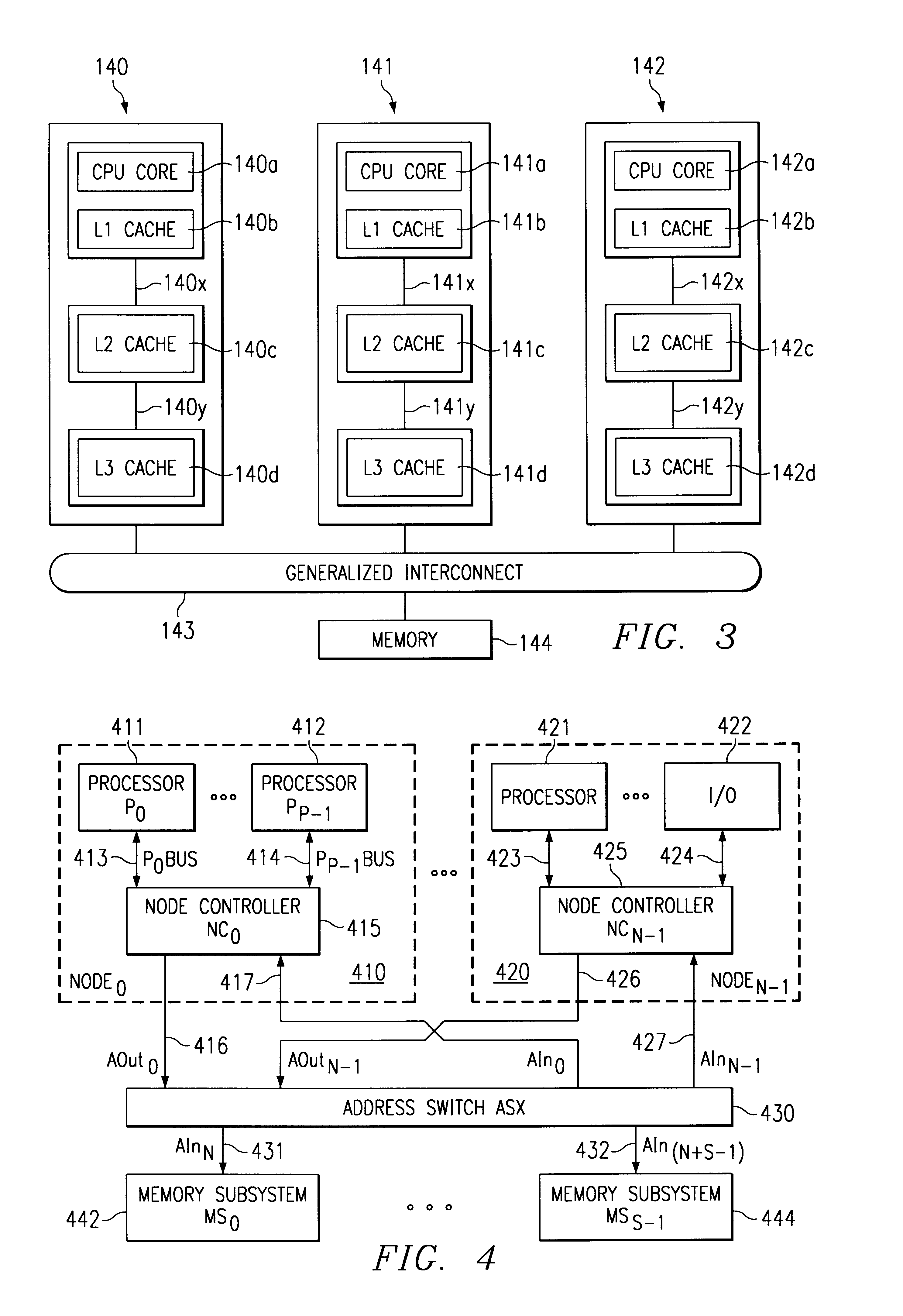Method and apparatus for avoiding data bus grant starvation in a non-fair, prioritized arbiter for a split bus system with independent address and data bus grants
a data bus and priority algorithm technology, applied in the field of data processing system, can solve the problems of limiting the size of the system, lowering the utilization rate of processors, and reducing the available bandwidth of processors, so as to speed up the data bus grant process and reduce the delay in giving address bus grants
- Summary
- Abstract
- Description
- Claims
- Application Information
AI Technical Summary
Benefits of technology
Problems solved by technology
Method used
Image
Examples
Embodiment Construction
With reference now to FIG. 1, the basic structure of a conventional multiprocessor computer system 110 is depicted. Computer system 110 has several processing units 112a, 112b, and 112c which are connected to various peripheral devices, including input / output (I / O) agents 114, which accept data from and provide data to a monitor adapter 102 and display monitor 105, keyboard adapter 104 and keyboard 107, and disk adapter 103 and permanent storage device 106, memory device 116 (such as dynamic random access memory or DRAM) that is used by the processing units to carry out program instructions, and firmware 118 whose primary purpose is to seek out and load an operating system from one of the peripherals (usually the permanent memory device) whenever the computer is first turned on. Processing units 112a-112c communicate with the peripheral devices by various means, including a bus 120. Computer system 110 may have many additional components which are not shown, such as serial and paral...
PUM
 Login to View More
Login to View More Abstract
Description
Claims
Application Information
 Login to View More
Login to View More - R&D
- Intellectual Property
- Life Sciences
- Materials
- Tech Scout
- Unparalleled Data Quality
- Higher Quality Content
- 60% Fewer Hallucinations
Browse by: Latest US Patents, China's latest patents, Technical Efficacy Thesaurus, Application Domain, Technology Topic, Popular Technical Reports.
© 2025 PatSnap. All rights reserved.Legal|Privacy policy|Modern Slavery Act Transparency Statement|Sitemap|About US| Contact US: help@patsnap.com



